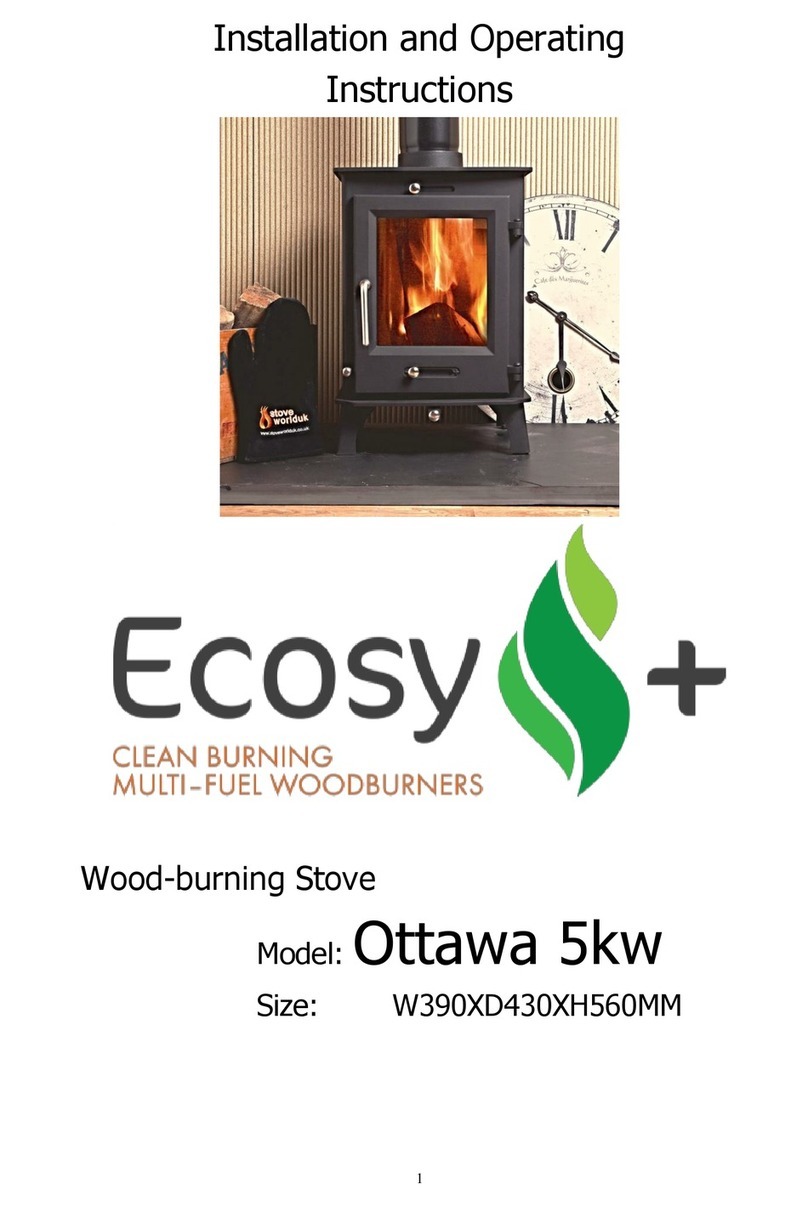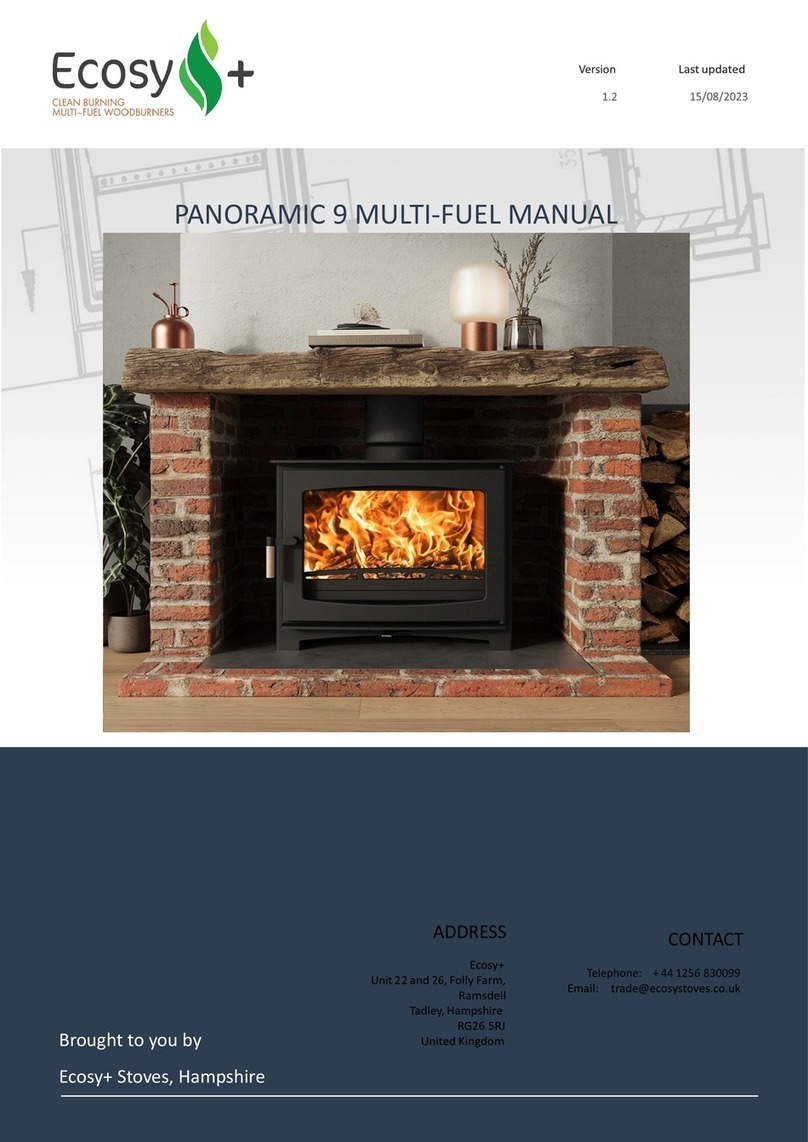
Page 4of 15
Note: The requirements regarding ventilation have been updated in the most recent
version of the Building Regulations and are now based on the air permeability of the house.
The stove is NOT suitable for installation in a shared flue system.
The flue pipe must be fitted INSIDE the flue spigot and sealed with a generous amount of
Fire Cement. A 5” flexible flue liner or twin walled chimney system can be used with this unit,
as it has passed the DEFRA testing. Access should be provided for cleaning the flue to
ensure that the passageways for exhaust gases remain free from obstruction.
The Ottawa 5 ECO is a woodburning only unit and does not require or include a grate and
ash pan. Wood burns best on the base with air flowing over the top of it. An additional grate
would increase the amount of air flowing under the fire and drastically reduce the efficiency.
When cleaning the stove out, all you need to do is take a few scoops of ash off the top and
leave the rest in the stove.
OPERATING INSTRUCTIONS
Regulations
All National and local regulations, including those referring to National and European
standards, need to be complied with when installing the stove.
The Clean Air Act 1993 and Smoke Control Areas
Under the Clean Air Act local authorities may declare the whole or part of the district of the
authority to be a smoke control area. It is an offence to emit smoke from a chimney of a
building, from a furnace or from any fixed boiler if located in a designated smoke control
area. It is also an offence to acquire an “unauthorised fuel” for use within a smoke control
area unless it is used in an “exempt” appliance (“exempt” from the controls which generally
apply in the smoke control area).
In England appliances are exempted by publication on a list by the Secretary of State in
accordance with changes made to sections 20 and 21 of the Clean Air Act 1993 by section
15 of the Deregulation Act 2015. Similarly, in Scotland appliances are exempted by
publication on a list by Scottish Ministers under section 50 of the Regulatory Reform
(Scotland) Act 2014. In Northern Ireland appliances are exempted by publication on a list
by the Department of Agriculture, Environment and Rural Affairs under Section 16 of the
Environmental Better regulation Act (Northern Ireland) 2016. In Wales appliances are
exempted by regulations made by Welsh Ministers.



























